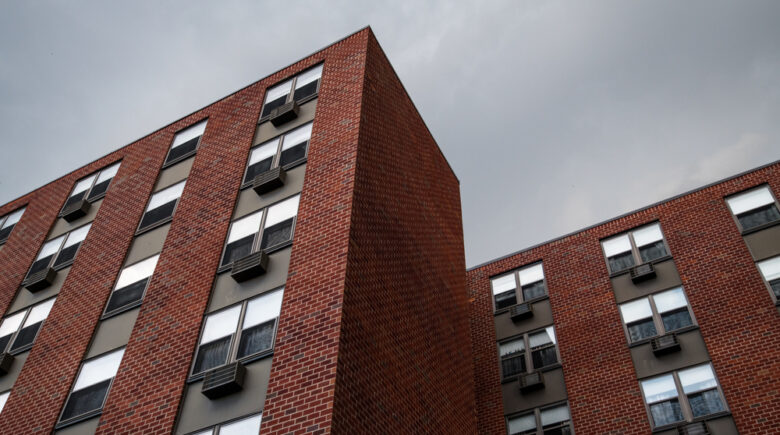Table of Contents
- Public Housing: A Direct Alternative with Unique Challenges
- Project-Based Rental Assistance (PBRA): Stability Without Portability
- Low-Income Housing Tax Credit (LIHTC): A Developer-Focused Solution
- Emergency Rental Assistance Programs (ERAP): Rapid Relief in Times of Crisis
- State and Local Housing Initiatives: Bridging Federal Gaps
- Permanent Supportive Housing: Combining Shelter with Services
- Innovative Approaches and the Path Forward
- Conclusion: A Comprehensive Commitment to Housing Security
- References:
The Housing Choice Voucher Program, widely known as Section 8, remains the most recognizable form of housing assistance in the United States. Administered by the U.S. Department of Housing and Urban Development (HUD), it provides rental subsidies to low-income individuals and families, allowing them to rent in the private market.
Eligibility is determined based on income thresholds—typically 50% or less of the median income in the area—and considers household size, citizenship status, and criminal background. Recipients are responsible for finding a suitable rental unit, which must meet HUD’s housing quality standards. The local Public Housing Agency (PHA) then pays a portion of the rent directly to the landlord, with tenants covering the balance.
Despite its effectiveness, the program is notoriously competitive. According to the Center on Budget and Policy Priorities, only 1 in 4 eligible households actually receives assistance, largely due to budget limitations and long waiting lists.
Public Housing: A Direct Alternative with Unique Challenges
Unlike Section 8, which operates in the private market, public housing involves government-owned and -operated residences. These include apartments, townhouses, and single-family homes designed for low-income residents. Rent is typically capped at 30% of the household’s monthly income.
While public housing offers stability for some, aging infrastructure and underfunding have plagued the system. The National Low Income Housing Coalition reports that over $70 billion in capital repairs are needed nationwide. This has made revitalization and redevelopment critical aspects of housing policy in recent years.
Local housing authorities are increasingly turning to public-private partnerships to renovate or replace outdated units, often through programs like RAD (Rental Assistance Demonstration), which allows properties to convert to Section 8 funding for greater flexibility and sustainability.
Project-Based Rental Assistance (PBRA): Stability Without Portability
Project-Based Rental Assistance is another HUD-supported program that differs from Section 8 in a crucial way: the subsidy is attached to the housing unit, not the tenant. This means a resident who moves loses their assistance unless they reapply.
PBRA is typically used in multifamily properties where entire buildings or portions of units are subsidized. Tenants benefit from below-market rents, while owners receive direct payments from HUD in return for maintaining the property and leasing to eligible families.
While it lacks the flexibility of Section 8, PBRA offers consistent funding to property owners and ensures long-term affordability for tenants. It is especially effective in communities where displacement and rising rents threaten to push low-income families out of their neighborhoods.
Low-Income Housing Tax Credit (LIHTC): A Developer-Focused Solution
The Low-Income Housing Tax Credit is the federal government’s primary tool for incentivizing the construction and rehabilitation of affordable rental housing. Administered by the Internal Revenue Service, it provides tax credits to private developers who commit to renting a certain percentage of units to low-income tenants.
Unlike direct subsidies, LIHTC operates through a competitive allocation process managed at the state level. Developers who receive credits can sell them to investors to raise equity for their projects, reducing the need for debt and allowing for below-market rents.
While LIHTC has facilitated the creation of over 3.5 million affordable units since 1987, critics argue it can still leave tenants vulnerable to rent increases once affordability periods expire. Nonetheless, it remains a foundational component of the U.S. housing strategy.
Emergency Rental Assistance Programs (ERAP): Rapid Relief in Times of Crisis
Emerging in response to the COVID-19 pandemic, Emergency Rental Assistance Programs were designed to prevent eviction and homelessness due to sudden income loss. Funded by the Consolidated Appropriations Act of 2021 and the American Rescue Plan, these programs provided billions in aid to cover rent and utilities for struggling households.
Although temporary, ERAP demonstrated the value of fast, flexible, and federally funded relief during economic disruptions. It also highlighted the need for permanent emergency housing supports to cushion against future crises, particularly for renters living paycheck to paycheck.
State and local governments continue to administer unspent ERAP funds, and some jurisdictions are exploring models to transition short-term frameworks into ongoing eviction prevention systems.
State and Local Housing Initiatives: Bridging Federal Gaps
While federal programs offer foundational support, many states and municipalities have developed their own initiatives to address regional needs. Examples include:
- California’s CalWORKs Housing Support Program**: Targets families receiving public assistance, providing rapid rehousing services including rental subsidies, case management, and landlord mediation.
- New York City’s CityFHEPS**: A local rental assistance program for homeless and at-risk families, allowing for more flexible eligibility than federal options.
- Massachusetts Rental Voucher Program (MRVP)**: Offers both tenant- and project-based vouchers with state funding, acting as a supplement or substitute for Section 8.
These state-level efforts allow for experimentation and tailored responses, particularly where housing costs outpace national averages.
Permanent Supportive Housing: Combining Shelter with Services
Permanent Supportive Housing (PSH) targets individuals facing chronic homelessness, often with mental health issues or disabilities. It combines long-term housing with wraparound support services such as healthcare, counseling, and employment assistance.
Research from the U.S. Interagency Council on Homelessness indicates that PSH reduces hospitalizations, incarceration, and emergency shelter use, producing cost savings for public systems. It is also considered a best practice for housing stability among high-need populations.
Though resource-intensive, PSH aligns with the “Housing First” model, which emphasizes the importance of stable housing as a prerequisite for addressing other life challenges.
Innovative Approaches and the Path Forward
As housing insecurity continues to rise, especially in urban centers, new models are emerging to complement traditional programs. Among them:
- Community Land Trusts**: Nonprofits that own land and lease it to homeowners at affordable rates to ensure long-term affordability.
- Inclusionary Zoning**: Policies that require or incentivize developers to include a percentage of affordable units in new housing developments.
- Modular and Micro-Housing**: Cost-effective construction methods that reduce build time and expense, expanding housing supply faster.
Moreover, proposed federal legislation such as the Housing Is a Human Right Act aims to expand funding, enforce anti-discrimination protections, and increase housing stock through public investment.
Addressing America’s housing crisis requires a multi-pronged strategy. Section 8 remains a critical tool, but real progress demands an ecosystem of programs—federal, state, and local—working in tandem.
Conclusion: A Comprehensive Commitment to Housing Security
While Section 8 provides a lifeline for millions, it is far from sufficient to meet the growing need for affordable housing. An array of complementary programs—from public housing and tax credits to emergency aid and state-run vouchers—offer vital support for diverse populations.
Solving the housing crisis demands more than temporary fixes. It requires sustained investment, cross-sector collaboration, and a policy landscape that adapts to the complexities of modern urban life. With rising rents and stagnant wages, housing assistance is not merely a safety net—it is an essential pillar of economic stability and public well-being.
References:
1. Center on Budget and Policy Priorities. “Policy Basics: The Housing Choice Voucher Program.” [https://www.cbpp.org](https://www.cbpp.org/research/housing/the-housing-choice-voucher-program)
2. National Low Income Housing Coalition. “The Gap: A Shortage of Affordable Homes.” [https://nlihc.org](https://nlihc.org/gap)
3. U.S. Interagency Council on Homelessness. “Supportive Housing.” [https://www.usich.gov](https://www.usich.gov/solutions/housing/supportive-housing/)
Table of Contents
- Public Housing: A Direct Alternative with Unique Challenges
- Project-Based Rental Assistance (PBRA): Stability Without Portability
- Low-Income Housing Tax Credit (LIHTC): A Developer-Focused Solution
- Emergency Rental Assistance Programs (ERAP): Rapid Relief in Times of Crisis
- State and Local Housing Initiatives: Bridging Federal Gaps
- Permanent Supportive Housing: Combining Shelter with Services
- Innovative Approaches and the Path Forward
- Conclusion: A Comprehensive Commitment to Housing Security
- References:
The Housing Choice Voucher Program, widely known as Section 8, remains the most recognizable form of housing assistance in the United States. Administered by the U.S. Department of Housing and Urban Development (HUD), it provides rental subsidies to low-income individuals and families, allowing them to rent in the private market.
Eligibility is determined based on income thresholds—typically 50% or less of the median income in the area—and considers household size, citizenship status, and criminal background. Recipients are responsible for finding a suitable rental unit, which must meet HUD’s housing quality standards. The local Public Housing Agency (PHA) then pays a portion of the rent directly to the landlord, with tenants covering the balance.
Despite its effectiveness, the program is notoriously competitive. According to the Center on Budget and Policy Priorities, only 1 in 4 eligible households actually receives assistance, largely due to budget limitations and long waiting lists.
Public Housing: A Direct Alternative with Unique Challenges
Unlike Section 8, which operates in the private market, public housing involves government-owned and -operated residences. These include apartments, townhouses, and single-family homes designed for low-income residents. Rent is typically capped at 30% of the household’s monthly income.
While public housing offers stability for some, aging infrastructure and underfunding have plagued the system. The National Low Income Housing Coalition reports that over $70 billion in capital repairs are needed nationwide. This has made revitalization and redevelopment critical aspects of housing policy in recent years.
Local housing authorities are increasingly turning to public-private partnerships to renovate or replace outdated units, often through programs like RAD (Rental Assistance Demonstration), which allows properties to convert to Section 8 funding for greater flexibility and sustainability.
Project-Based Rental Assistance (PBRA): Stability Without Portability
Project-Based Rental Assistance is another HUD-supported program that differs from Section 8 in a crucial way: the subsidy is attached to the housing unit, not the tenant. This means a resident who moves loses their assistance unless they reapply.
PBRA is typically used in multifamily properties where entire buildings or portions of units are subsidized. Tenants benefit from below-market rents, while owners receive direct payments from HUD in return for maintaining the property and leasing to eligible families.
While it lacks the flexibility of Section 8, PBRA offers consistent funding to property owners and ensures long-term affordability for tenants. It is especially effective in communities where displacement and rising rents threaten to push low-income families out of their neighborhoods.
Low-Income Housing Tax Credit (LIHTC): A Developer-Focused Solution
The Low-Income Housing Tax Credit is the federal government’s primary tool for incentivizing the construction and rehabilitation of affordable rental housing. Administered by the Internal Revenue Service, it provides tax credits to private developers who commit to renting a certain percentage of units to low-income tenants.
Unlike direct subsidies, LIHTC operates through a competitive allocation process managed at the state level. Developers who receive credits can sell them to investors to raise equity for their projects, reducing the need for debt and allowing for below-market rents.
While LIHTC has facilitated the creation of over 3.5 million affordable units since 1987, critics argue it can still leave tenants vulnerable to rent increases once affordability periods expire. Nonetheless, it remains a foundational component of the U.S. housing strategy.
Emergency Rental Assistance Programs (ERAP): Rapid Relief in Times of Crisis
Emerging in response to the COVID-19 pandemic, Emergency Rental Assistance Programs were designed to prevent eviction and homelessness due to sudden income loss. Funded by the Consolidated Appropriations Act of 2021 and the American Rescue Plan, these programs provided billions in aid to cover rent and utilities for struggling households.
Although temporary, ERAP demonstrated the value of fast, flexible, and federally funded relief during economic disruptions. It also highlighted the need for permanent emergency housing supports to cushion against future crises, particularly for renters living paycheck to paycheck.
State and local governments continue to administer unspent ERAP funds, and some jurisdictions are exploring models to transition short-term frameworks into ongoing eviction prevention systems.
State and Local Housing Initiatives: Bridging Federal Gaps
While federal programs offer foundational support, many states and municipalities have developed their own initiatives to address regional needs. Examples include:
- California’s CalWORKs Housing Support Program**: Targets families receiving public assistance, providing rapid rehousing services including rental subsidies, case management, and landlord mediation.
- New York City’s CityFHEPS**: A local rental assistance program for homeless and at-risk families, allowing for more flexible eligibility than federal options.
- Massachusetts Rental Voucher Program (MRVP)**: Offers both tenant- and project-based vouchers with state funding, acting as a supplement or substitute for Section 8.
These state-level efforts allow for experimentation and tailored responses, particularly where housing costs outpace national averages.
Permanent Supportive Housing: Combining Shelter with Services
Permanent Supportive Housing (PSH) targets individuals facing chronic homelessness, often with mental health issues or disabilities. It combines long-term housing with wraparound support services such as healthcare, counseling, and employment assistance.
Research from the U.S. Interagency Council on Homelessness indicates that PSH reduces hospitalizations, incarceration, and emergency shelter use, producing cost savings for public systems. It is also considered a best practice for housing stability among high-need populations.
Though resource-intensive, PSH aligns with the “Housing First” model, which emphasizes the importance of stable housing as a prerequisite for addressing other life challenges.
Innovative Approaches and the Path Forward
As housing insecurity continues to rise, especially in urban centers, new models are emerging to complement traditional programs. Among them:
- Community Land Trusts**: Nonprofits that own land and lease it to homeowners at affordable rates to ensure long-term affordability.
- Inclusionary Zoning**: Policies that require or incentivize developers to include a percentage of affordable units in new housing developments.
- Modular and Micro-Housing**: Cost-effective construction methods that reduce build time and expense, expanding housing supply faster.
Moreover, proposed federal legislation such as the Housing Is a Human Right Act aims to expand funding, enforce anti-discrimination protections, and increase housing stock through public investment.
Addressing America’s housing crisis requires a multi-pronged strategy. Section 8 remains a critical tool, but real progress demands an ecosystem of programs—federal, state, and local—working in tandem.
Conclusion: A Comprehensive Commitment to Housing Security
While Section 8 provides a lifeline for millions, it is far from sufficient to meet the growing need for affordable housing. An array of complementary programs—from public housing and tax credits to emergency aid and state-run vouchers—offer vital support for diverse populations.
Solving the housing crisis demands more than temporary fixes. It requires sustained investment, cross-sector collaboration, and a policy landscape that adapts to the complexities of modern urban life. With rising rents and stagnant wages, housing assistance is not merely a safety net—it is an essential pillar of economic stability and public well-being.
References:
1. Center on Budget and Policy Priorities. “Policy Basics: The Housing Choice Voucher Program.” [https://www.cbpp.org](https://www.cbpp.org/research/housing/the-housing-choice-voucher-program)
2. National Low Income Housing Coalition. “The Gap: A Shortage of Affordable Homes.” [https://nlihc.org](https://nlihc.org/gap)
3. U.S. Interagency Council on Homelessness. “Supportive Housing.” [https://www.usich.gov](https://www.usich.gov/solutions/housing/supportive-housing/)







